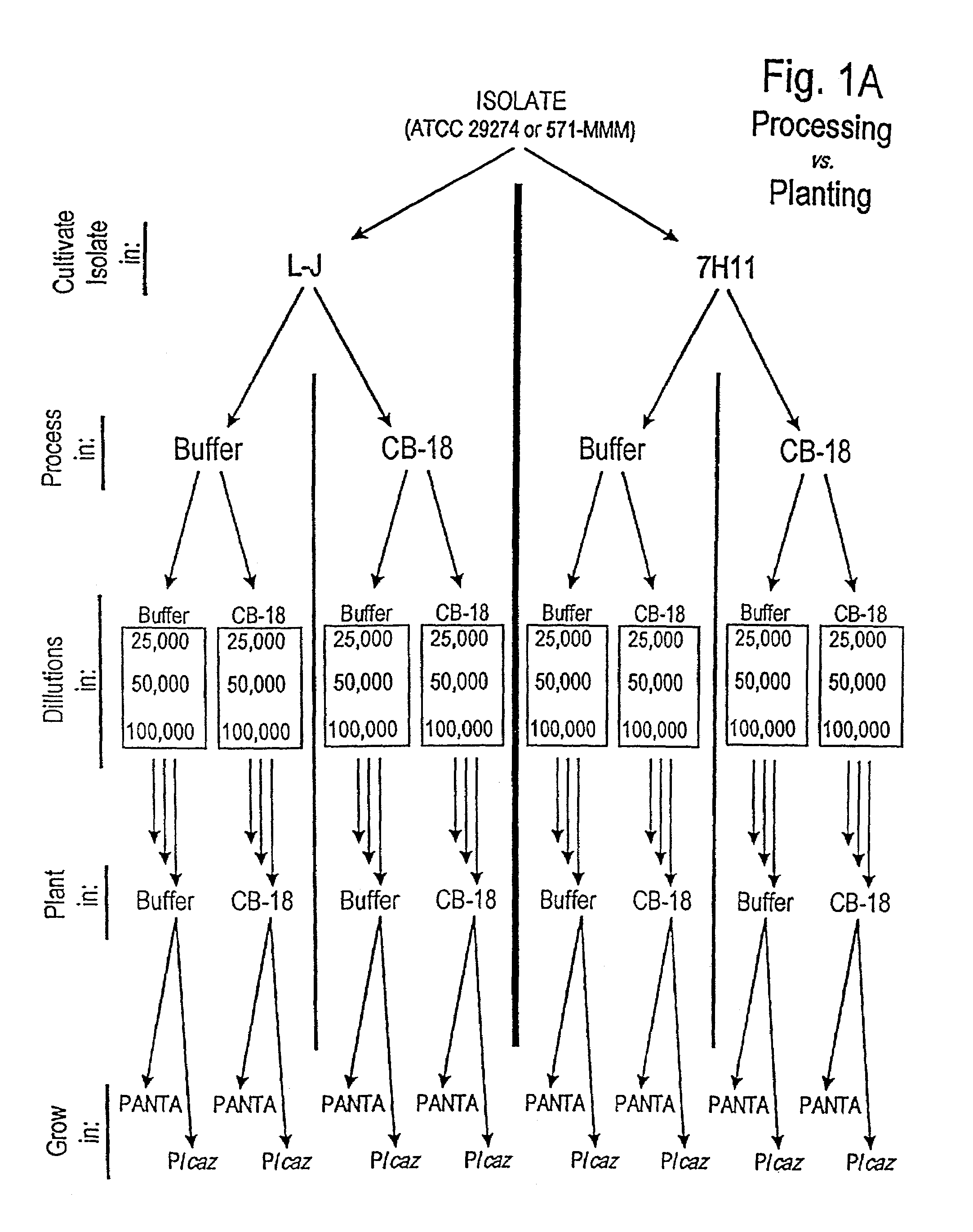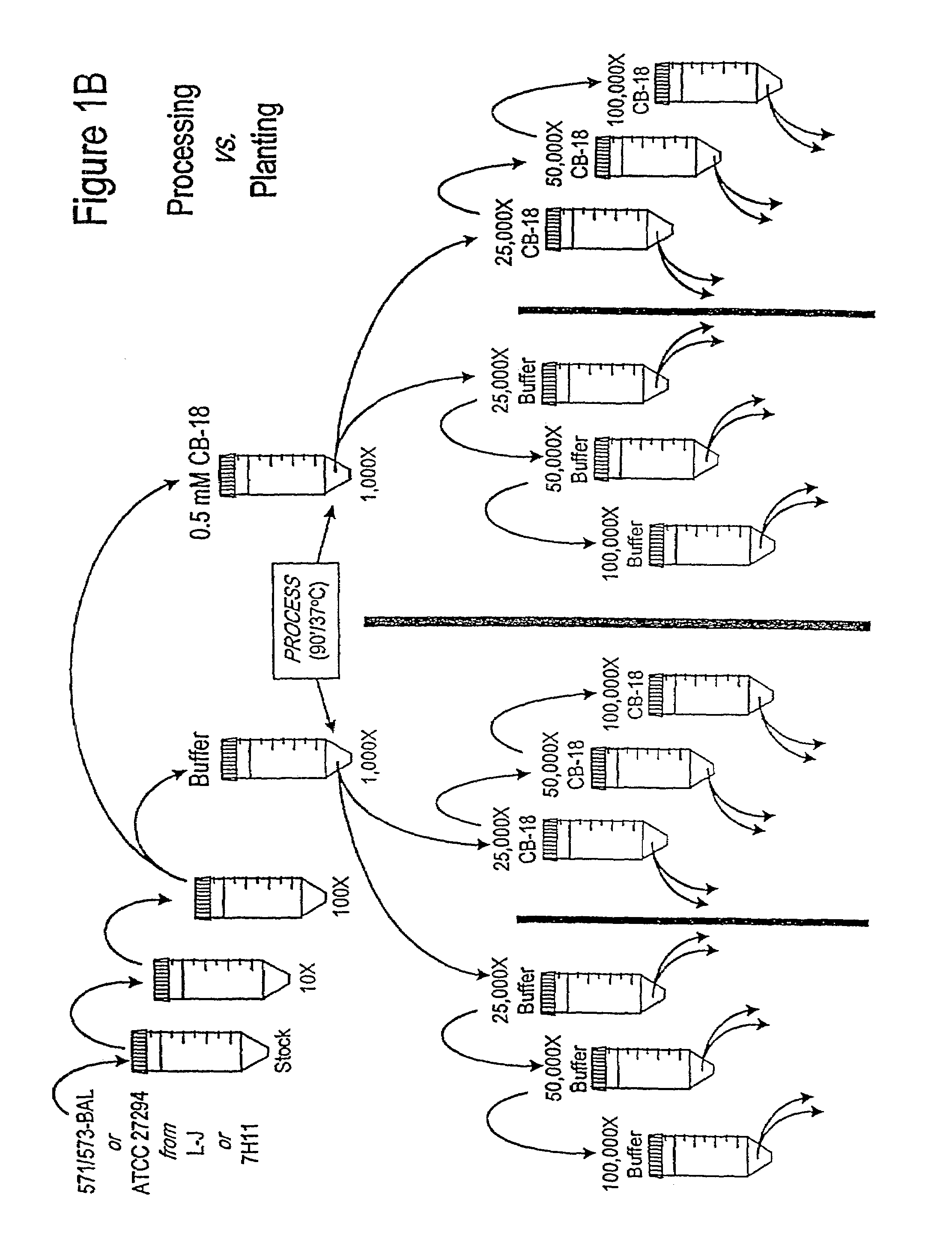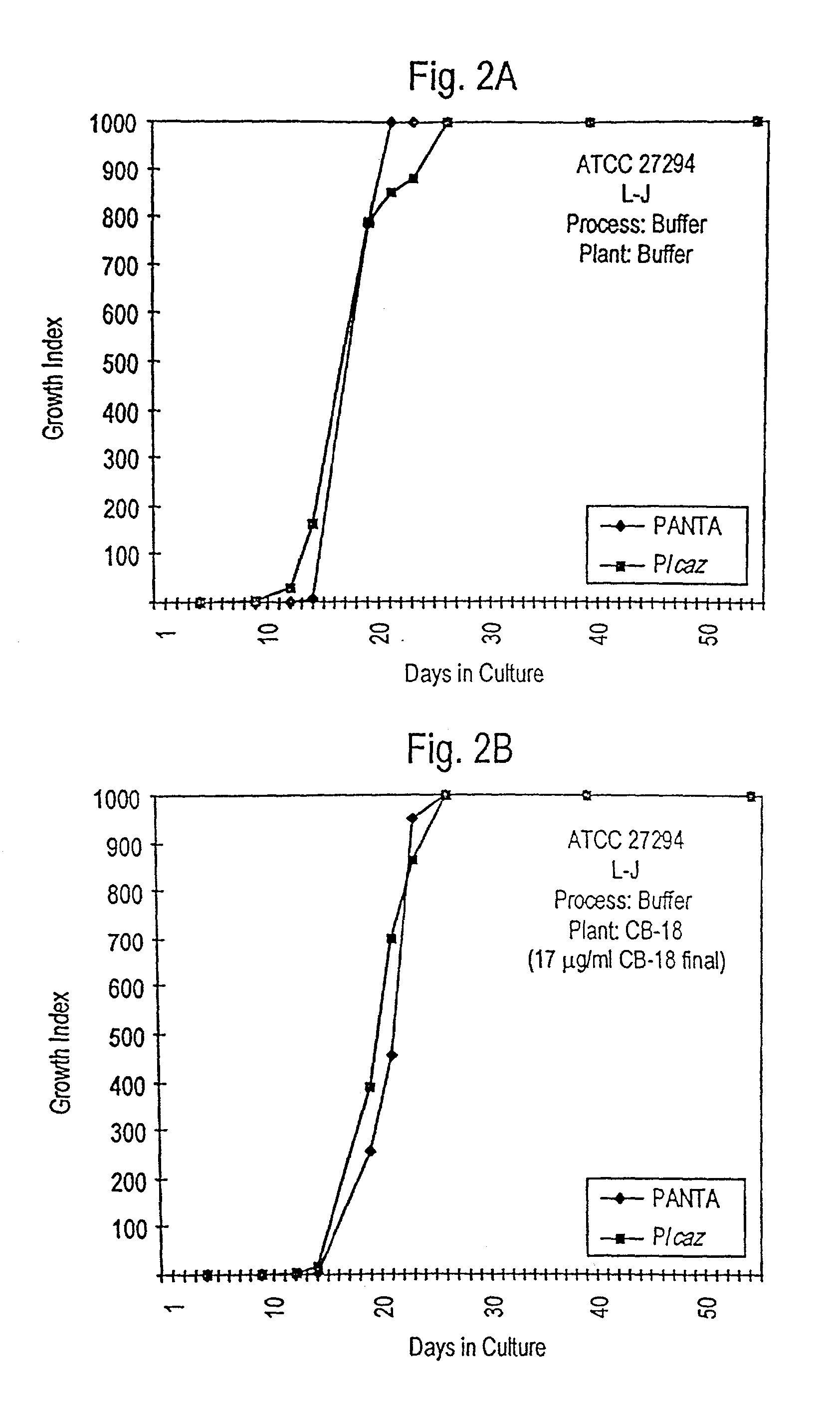Betaines as adjuvants to susceptibility testing and antimicrobial therapy
a susceptibility testing and antimicrobial technology, applied in the field of betaines as adjuvants to susceptibility testing and antimicrobial therapy, can solve the problems of marked and dramatic loss of liquid culture sensitivity, and achieve the effects of reducing the undesirable growth of contaminating bacteria, reducing the risk of infection, and improving diagnostic sensitivity
- Summary
- Abstract
- Description
- Claims
- Application Information
AI Technical Summary
Benefits of technology
Problems solved by technology
Method used
Image
Examples
example 1
CB-18 Processing and Mycobacterial Culture
[0184]The inventions described herein were initially conceived as a result of observations made during studies involved with novel methods for processing clinical specimens for the detection of mycobacteria. These procedures were based on the methods of Thornton as described in WO 95 / 27076 and were designed as a primary processing methodology for the isolation of bacteria with mycolic acid structures, especially mycobacteria, from clinical specimens, and most especially from respiratory specimens. The method of Thornton WO 95 / 27076 is described below, and manufacture of the reagents for this procedure are described at the end of this Example.
[0185](1) Place 1–10 mls of sputum or bronch-wash in a 50 ml conical tube.
[0186]NOTE: While respiratory specimens are the predominant specimen type expected to be used in conjunction with the procedure described here, other specimen types such as water, soil, tissue, fecal and others can be adapted for u...
example 2
CB-18 Pilot Study
[0233]CB-18 was used to process respiratory specimens for the detection of Mycobacteria (acid fast bacilli: AFB) in an effort to evaluate the methods of Thornton WO 95 / 27076. Respiratory specimens (n=573) were split and collected from the TB-laboratories of Quest Diagnostics-Baltimore (BAL), as well as Quest Diagnostics-Teterboro (TBR), Washington, D.C. Bureau of Laboratories (BOL), Johns Hopkins Hospitals (JHH), and the University of Maryland at Baltimore (UMB). The host site split each specimen such that half of each specimen was processed at the site by the standard NALC / NaOH method (Kent, P. T. et al., “Public Health Mycobacteriology,” in A Guide for the Level III Laboratory, U.S. Department of Health and Human Service, Centers for Disease Control, (1985) pp. 31–46) and planted on both liquid (either BACTEC 12B or BBL MGIT) and solid media (either 7H11, L-J or SeptiCheck), and the other half of each specimen was sent to the Quest-Baltimore facility where specime...
example 3
Processing in CB-18 vs. Planting in CB-18
[0257]In an effort to understand the dynamic interactions of CB-18 carried over into the 12B / PANTA / caz culture system, the experiments outlined in FIGS. 1A and 1B were devised (NOTE: FIGS. 1A and 1B refer to the same experiment—two different renderings of the same experiment are provided due to the complexity of the experimental design). Two different isolates were used: the M. tuberculosis type strain ATCC 27294 (ATCC, Rockville, Md.), and the clinical isolate 571 / 573-BAL derived from the CB-18 Pilot Study (NOTE: “571 / 573-BAL” refers to one of two isolates, both isolates being derived from the same patient, but from two different naive specimens (i.e., 571-BAL and 573-BAL (see Table 8 and compare FIGS. 18 and 19)) submitted on the same day—these two isolates behaved identically in all respects and were used interchangeably in this and the Examples which follow.)
[0258]Each isolate was cultivated on either Lowenstein-Jensen (L-J) slants or 7H1...
PUM
| Property | Measurement | Unit |
|---|---|---|
| concentrations | aaaaa | aaaaa |
| concentrations | aaaaa | aaaaa |
| concentrations | aaaaa | aaaaa |
Abstract
Description
Claims
Application Information
 Login to View More
Login to View More - R&D
- Intellectual Property
- Life Sciences
- Materials
- Tech Scout
- Unparalleled Data Quality
- Higher Quality Content
- 60% Fewer Hallucinations
Browse by: Latest US Patents, China's latest patents, Technical Efficacy Thesaurus, Application Domain, Technology Topic, Popular Technical Reports.
© 2025 PatSnap. All rights reserved.Legal|Privacy policy|Modern Slavery Act Transparency Statement|Sitemap|About US| Contact US: help@patsnap.com



